
Photography by Thomas Barwick
A wide circle has formed under a thatched roof at the Bodhi Tree Yoga Resort in Costa Rica. Women and men, singles and couples, friends and strangers, regulars and newbies (myself included) are sitting cross-legged, instructed to close our eyes and cradle a mug of hot cacao to our chests to let the warmth penetrate to our hearts — which we’re told will be cracking wide open any minute now.
Some guests are uninhibited. One woman breathes heavily as she rocks her body, massages the white ceramic cup vigorously between her breasts, then sips the liquid. She has clearly done this before.
Others, like myself, are slow to engage and hesitant to take a drink. Among our group of semi-skeptics are an editor, a banker and a former CIA agent, who I watch cringe as she chews on the drink’s bitter cacao bits. Another woman is trying not to laugh, and I’m doing my best to avoid eye contact and the inevitable ripple effect. When our group is directed to lay down and sink into the vibrations of shamanic drumming, I still have one eye open, my pulse quickening and my mind spinning.
A retreat is often thought of as a noun — a secluded place replete with palm trees, hammocks and yoga mats. But recently, retreating has become a verb as we seek something more active, something healing, something life-changing. We’re looking for a greater antidote to our troubles than vacation alone can deliver. A chance to take the exit ramp from daily life and steer toward the edge of our future, a metaphorical cliff for what’s next. Retreating to someplace exclusive and exceedingly special while doing something outside our comfort zone seems to hold a promise and, perhaps, an answer to our most burning questions: What are we doing here? Where are we going? What is the purpose of all of this?
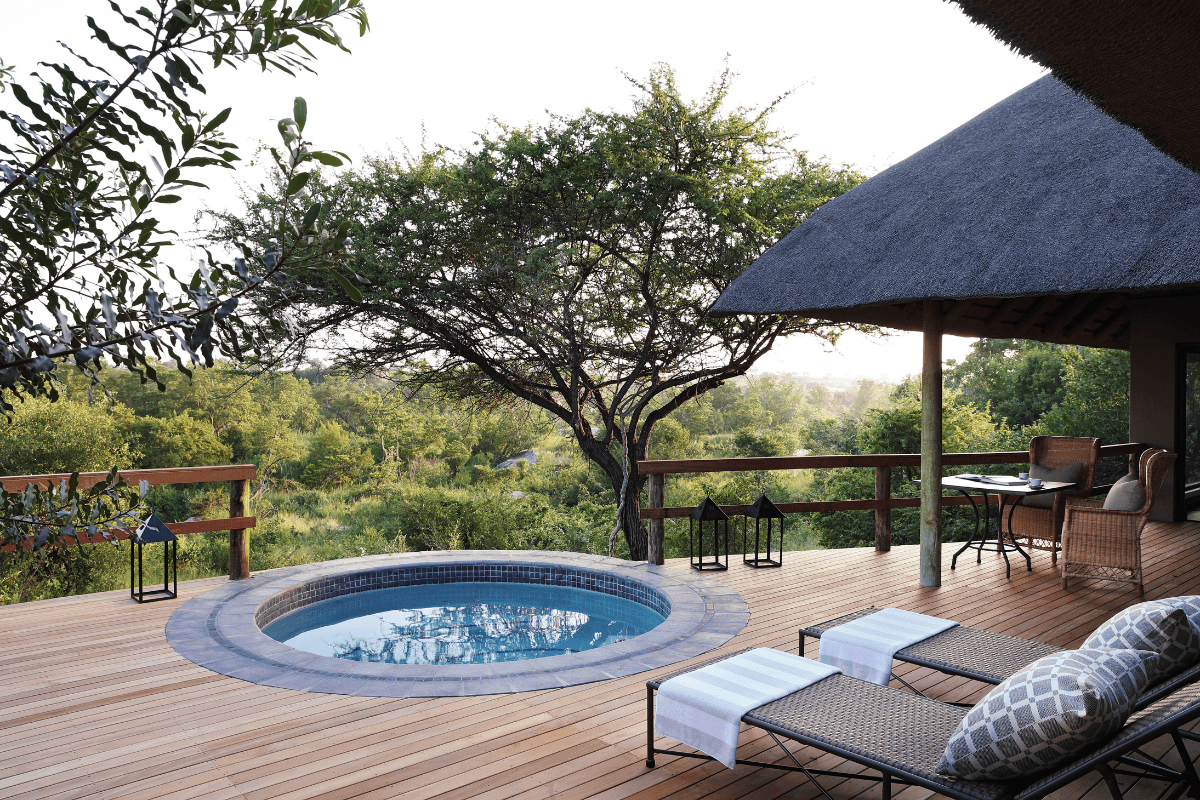
Photography provided by Londolozi Game Reserve
Our Collective Longings
For centuries, Indigenous, Buddhist, Hindu, Jewish, Sufi and Christian communities have practiced purposeful, quiet contemplation. Catholics held retreats in secrecy until 1856, when priests of the Society of the Holy Cross gathered for five days in England for silence and prayer, kicking off a trend. A century later, the ritual shifted toward the spiritual. When the Esalen Institute opened in 1962 in Big Sur, California, it became an icon for transformation — even more so after the 2015 Mad Men finale perched a burnt-out Don Draper on a familiar hilltop for his aha moment.
Today, wellness tourism is a $436-billion industry that’s projected to grow to a whopping $1.1 trillion by 2025 per the Global Wellness Institute (which, to put it in perspective, would surpass the airline industry). Jet setters are forgoing extravagant vacations to instead retreat. This pullback is a conscious step — ideally taken before hitting rock bottom à la Draper — toward reclaiming our relationships with ourselves, our loved ones and the greater world around us.
“People who want to have deep, meaningful interactions are not going to a spa; they want real, authentic, vulnerable human connection,” says Jennifer Freed, a renowned psychological astrologer who’s been leading retreats for 30 years. “Our lives have become so fast-paced that the only way we can get any reflection is to get away from life.”
In working with both the affluent and the disadvantaged, Freed is seeing an all-time high in depression, anxiety and suffering. This epidemic of loneliness impacts everyone from millennials to seniors, and it’s lethal. Brigham Young University researchers found loneliness to be as harmful as being an alcoholic or smoking 15 cigarettes a day, effectively shortening our lifespans.

Photography by Maia Hinton
“Our country is a society of unwellness where we’re so stressed and so dis-eased that we’re trying to solve it with medication and psychotherapy, but that isn’t getting to the root,” notes Freed, author of A Map to Your Soul. “No matter how much money or capital people have, they have the exact same human longings as anyone else.”
Those longings lead to curiosities and conversation about what’s possible — something Freed loves to discuss. After her Goop podcast episode “Determining Your Life’s Purpose” ran in 2020, she gained 600 new clients overnight and launched her Jupiter membership club, which offers exclusive excursions. This surge in interest stunned her and begs the question: Is there a more cosmic reason for this swell in retreating? Absolutely, says Freed.
For the first time since 1847 (strangely — or not — coinciding closely with the first recorded retreat date), Neptune is in the ruling sign of Pisces. Huh? To translate: “We are in a rare 13-year astrological space where collective dreaming collides with mysticism, transcendence, spiritual inquiry and unity,” says Freed, adding that 2024 will intensify our need for community. “We’re in the gold rush of retreats. It’s all about oneness. We’re so tired of being so separate; it’s exhausting.”

Photography by Julie Pointer Adams
That exhaustion can lead to disappointment. A vacation, for example, can feel like just another hedonistic holiday that reminds us of our privilege. A wellness retreat, on the other hand, feeds the soul, not the ego, releasing us from our devices, our empires and our social expectations. Combined with slowing down, sleeping better, moving the body and connecting with others, this creates clarity to discover what changes we need to make.
“A retreat creates a nourishing environment to get you what you need in life,” says clinical psychologist Diana Hill, who leads retreats in Arizona and Costa Rica. “I have had clients reorient their values and decide to get a divorce or leave their job.” Her guests go silent for stretches, passing notes to each other to quiet their minds. They also give up one thing that’s not serving them, like caffeine or self-criticism.
For Hill, the effects have been life-altering. As a teen, she spent years battling an eating disorder, in and out of hospitals. Her awakening came when her mother took her to a sweat lodge on Chumash land in California and to Orcas Island in Washington to witness the namesake whales. “It was all so magical, versus the hours and hours of therapy,” she recalls. “Healing at a retreat is the result of the whole package. Picking one element of the experience is like trying to find the one ingredient in a salad that makes it good for you.”
Retreating, Hill says, is like gardening. To have a harvest, we need a fallow, or rest period. “There’s this expectation to be chronically productive, but whether you’re an athlete or an attorney, you have to reset,” she explains. It could be a digital detox day or a week away, but it needs to be intentional since no one is scheduling that for us. And nearly every expert agrees, it’s best done surrounded by nature.
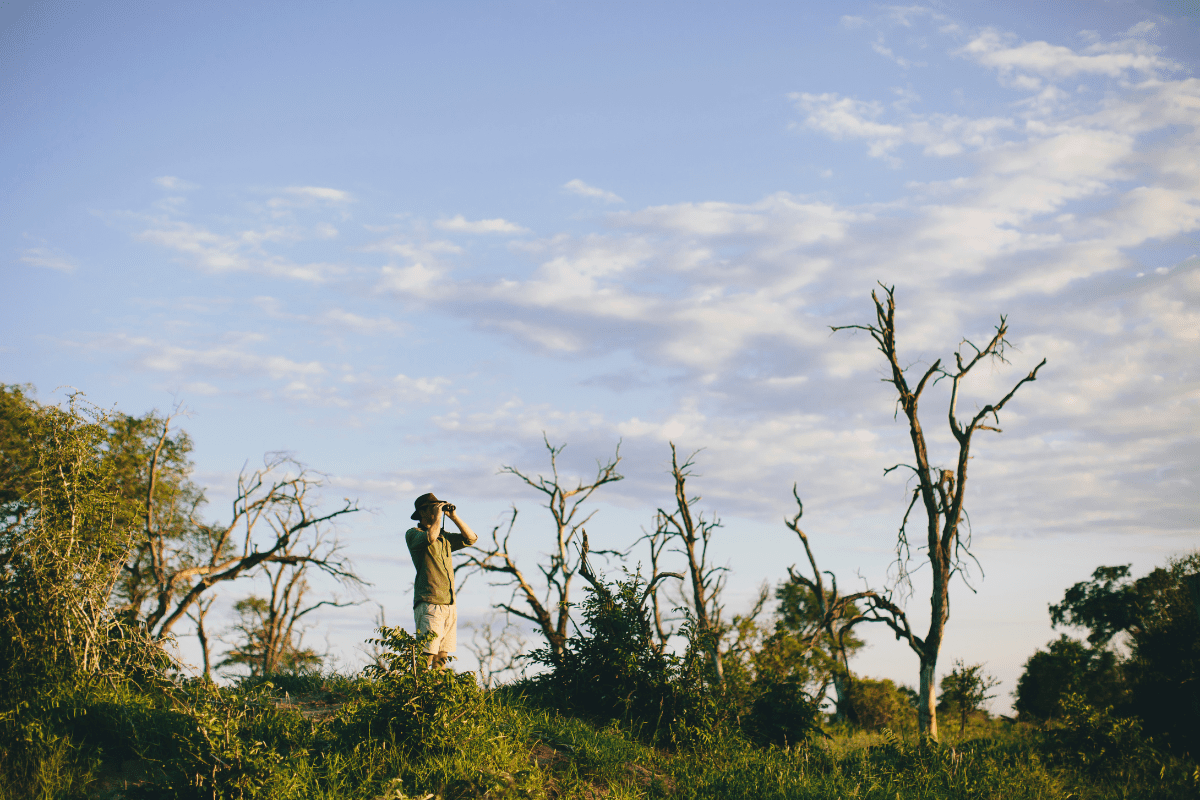
Photography provided by Londolozi Game Reserve
Into the Wild
From forest bathing to walking the dog, time spent outdoors improves our mood, mindset and mental health, according to the World Health Organization. In the retreat world, the wilder and more far-flung, the better. Even armchair travelers tune in to watch collective experiences unfold, from Nine Perfect Strangers getting unknowingly micro-dosed in Australia to close encounters in Hawaii and Italy on The White Lotus. Onscreen and off, the backdrop is not only part of the beauty, it’s part of the benefit.
The Caribbean island of Mustique has been a longtime hideaway for the rich and famous, but now rather than holing up in a swanky suite, people are spending thousands to be among others. In June, the California-based Firestone Sisters will host their signature five-day Wild Precious Life retreat (starting at $8,000, flights not included) at the isle’s renowned Cotton House.
Retreating to such a remote locale adds a layer of luxury, allowing guests to feel pampered yet vulnerable enough to peel back their protective layers. “Ego, fame and wealth cannot protect you from trauma,” says Mary Firestone, author of Trusting the Dawn. “They may help you hide out and punt the healing work down the road, but eventually the effects of unhealed traumatic residue wreak havoc in our bodies, lives and relationships.”
The sisters founded their business in 2013, when retreats were still no-frills getaways often focused on dieting. “We were in our early thirties and had highly successful yet anxious friends in miserable jobs who wouldn’t give themselves permission to do life any other way,” Lucy Firestone remembers. With Mary’s psychology background and Lucy’s life coaching prowess, they saw an opportunity to pull people into the world of healing in plusher environs.
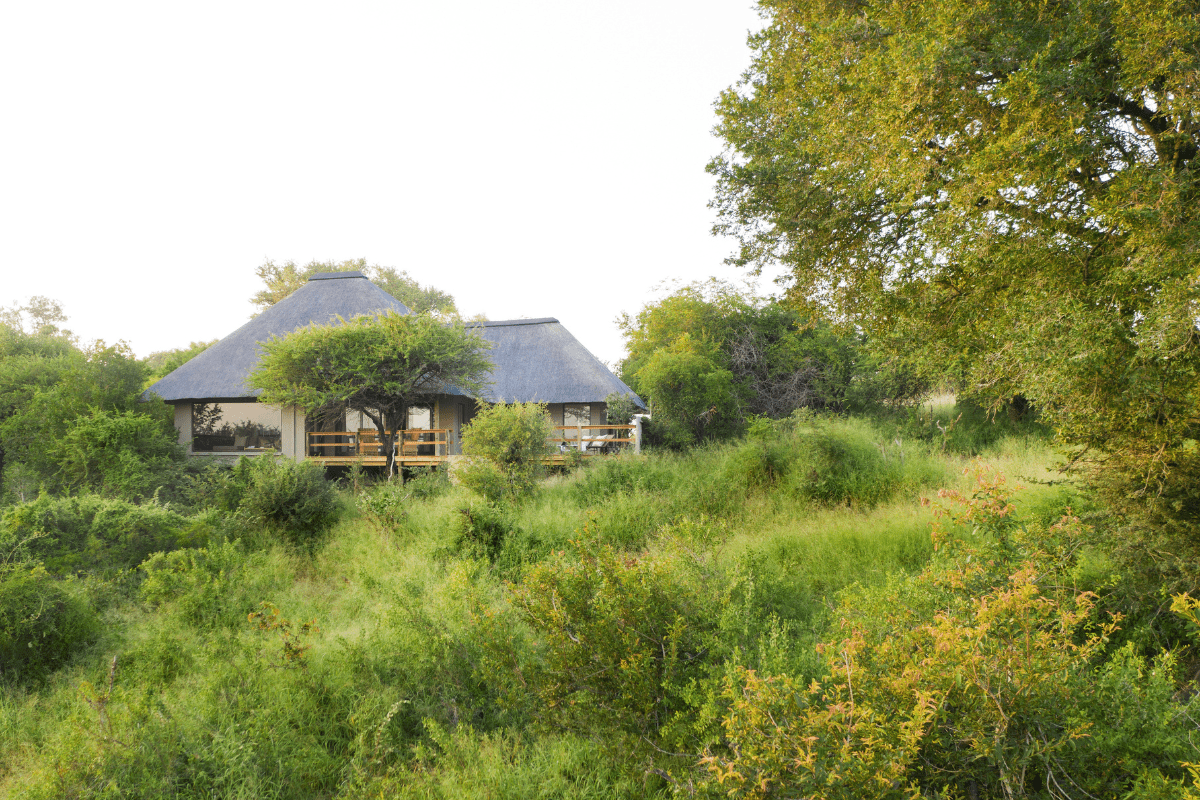
Photography provided by Londolozi Game Reserve
“We take care of the external needs so people can feel safe tending to their internal needs, desires and evolution,” Mary says. They encourage cocktails, bubble baths and sunbathing to complement dynamic group sessions centered around manifesting or eye gazing. The duo gets tapped by top hotels including the Ritz-Carlton, Post Ranch Inn and Alisal Ranch to give high-end clientele that deep dive into self-discovery. But no matter how luxe the setting, their focus is always on nature, beginning with meditation on a beach or mountaintop. “There’s a huge vibrational frequency that’s magnified in a group setting,” Lucy notes, which creates a ripple effect where everyone benefits.
This beneficial, collective, even cult-like mentality has nudged many fitness leaders to move out of the studio and into the great outdoors. A fan favorite of celebs like Jennifer Aniston, Alicia Keys and Meghan Markle, Taryn Toomey founded the Class in 2011. She incorporates shaking, heavy breathing and heart-opening exercises into her workouts. After burpees and mountain climbers, she instructs devotees to lay their hands on their hearts and notice what’s coming up. Now, Toomey has taken her New York City–based mind-body phenomenon on the road with her so-called “retreatments,” set in the United States, the Dominican Republic, Italy and beyond. The locale informs the activity, such as forest bathing in Maui or floating in the Mediterranean Sea.
These sojourns bring clients together for classes, meditations and farm-to-table meals to restore the body physically, mentally and spiritually. This settles their nervous systems, creating a higher capacity to deal with the overstimulated life they’ll inevitably be returning to. “We tend to live our lives in a fight-or-flight state, which creates reactions rather than responses,” says Toomey. “My students move into a parasympathetic state of rest and repose, using mindfulness techniques to help them respond to situations.”
Instincts are key in South Africa, where Boyd Varty expanded his luxury safari business to include nature-immersive retreats. He and his sister are the fourth generation custodians of Londolozi, a former hunting camp turned healing space, where Nelson Mandela went to recover after being released from prison. Varty’s Track Your Life excursions draw mostly male high-level executives who work together to track animals in the African wilderness while identifying and addressing personal blockages.

Photography provided by Londolozi Game Reserve
“At its core, tracking is about finding what you’re looking for,” Varty explains, adding that this “manly man” activity can help participants open up to one another. “Men are generally not comfortable getting in a group and talking about our feelings. But we’re programmed to face challenges together, and it’s quite challenging to track a rhino. These experiences then become a doorway to even deeper conversations.”
Varty can usually spot a block within a matter of minutes, but he lets the healing process unfold organically. Being together in stillness allows people to tap into their intention, ask their own questions and also answer Varty’s: What makes you feel alive again?
“We let nature be the teacher,” he says. “Our wild self knows what it’s meant to do, just like a lion knows to roar or a tree knows to blossom. People come to their own answers. We are just the catalysts, holding space to facilitate and touching the rudder at the right moment.”
In tracking, rediscovering purpose becomes so powerful that once may not be enough. On one of Varty’s recent retreats, every single participant rebooked on the final day, anticipating the need for another reboot. “No one has a vision when they’re burnt-out; it doesn’t work like that,” he shares. “There’s a power in the silence and stillness of a game drive, allowing the vision to emerge.”
These visions are part of the mystique. While there’s no guarantee of a life-changing moment, the exercise — whether tracking animals or walking on hot coals — is usually just enough woo to help you leap out of daily life and step toward that edge of what’s next. This alone can be the most intimidating yet rewarding element.
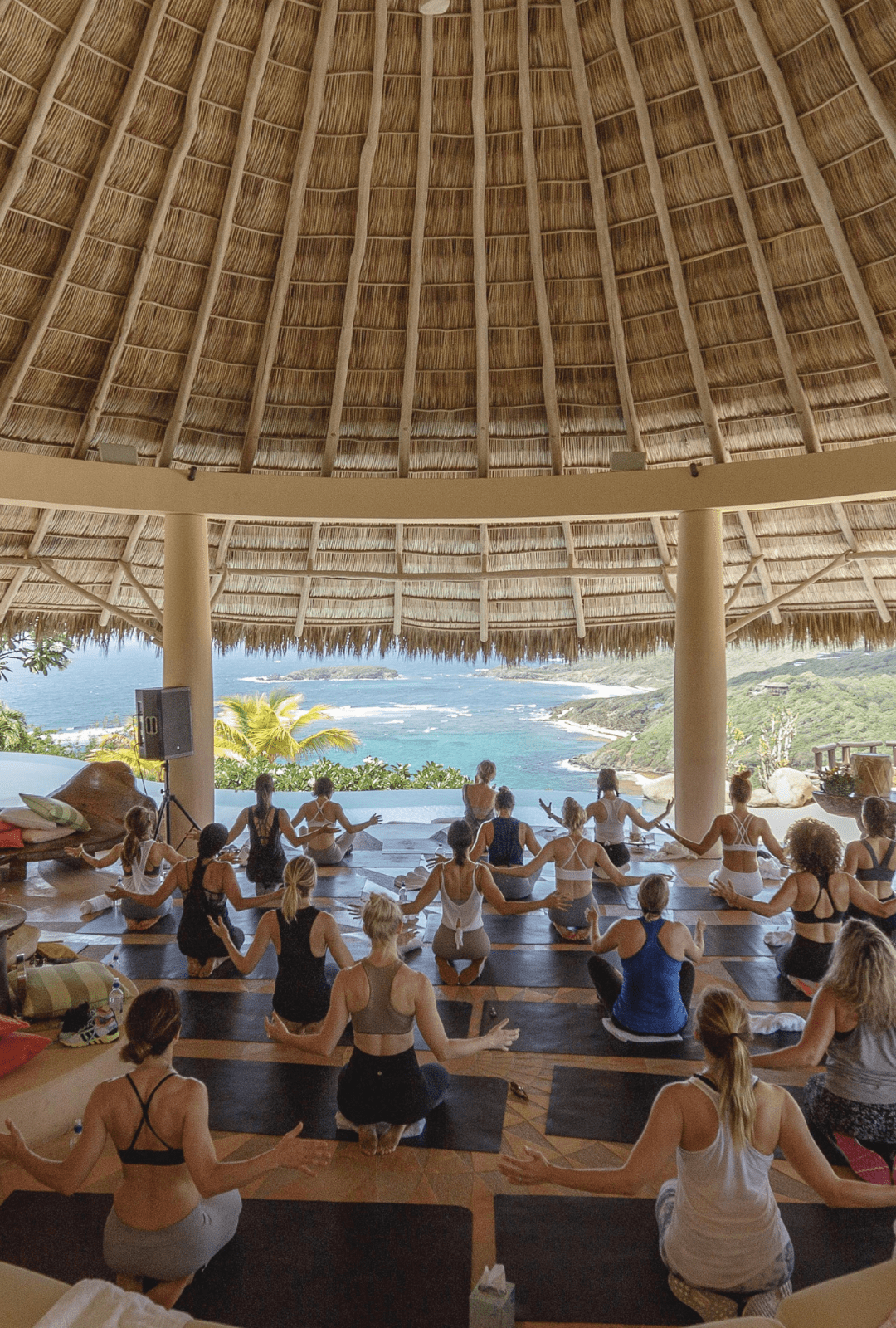
Photography by Taryn Toomey
What Kind of Woo?
From chart readings to tantric yoga, retreat activities can be as wild as the setting itself — and the accompanying price tag. Those visions, it turns out, come at a cost. Participants in Varty’s four-day retreats spend north of $10,000, while others have paid $50,000 for a weekend of off-grid healing on an undisclosed private island. Researching the who, what, where and woo is critical, because falling in with a toxic group or a predatory guru (cue Nicole Kidman’s Masha in Nine Perfect Strangers) can conjure up the underbelly of the retreat world.
“We are not gurus; we are facilitators,” Mary Firestone warns. “You are your own best guide, and you should run away from anyone who claims to be a guru.” A leader well-versed in woo — anything from energy shifting to ecstatic breathwork — can be helpful in breaking out of unwanted, unhelpful patterns. Once trust is established, that facilitator can initiate action to fit the purpose.
New Zealand–based Lauren Roxburgh has been dubbed the Body Whisperer and works with A-list clients like LeBron James, Michelle Williams and Molly Sims. Her woo is foam rolling, which breaks up fascia — our webbing of connective tissue just below the surface — that stores “the three Ts: trauma, toxins and thoughts.”
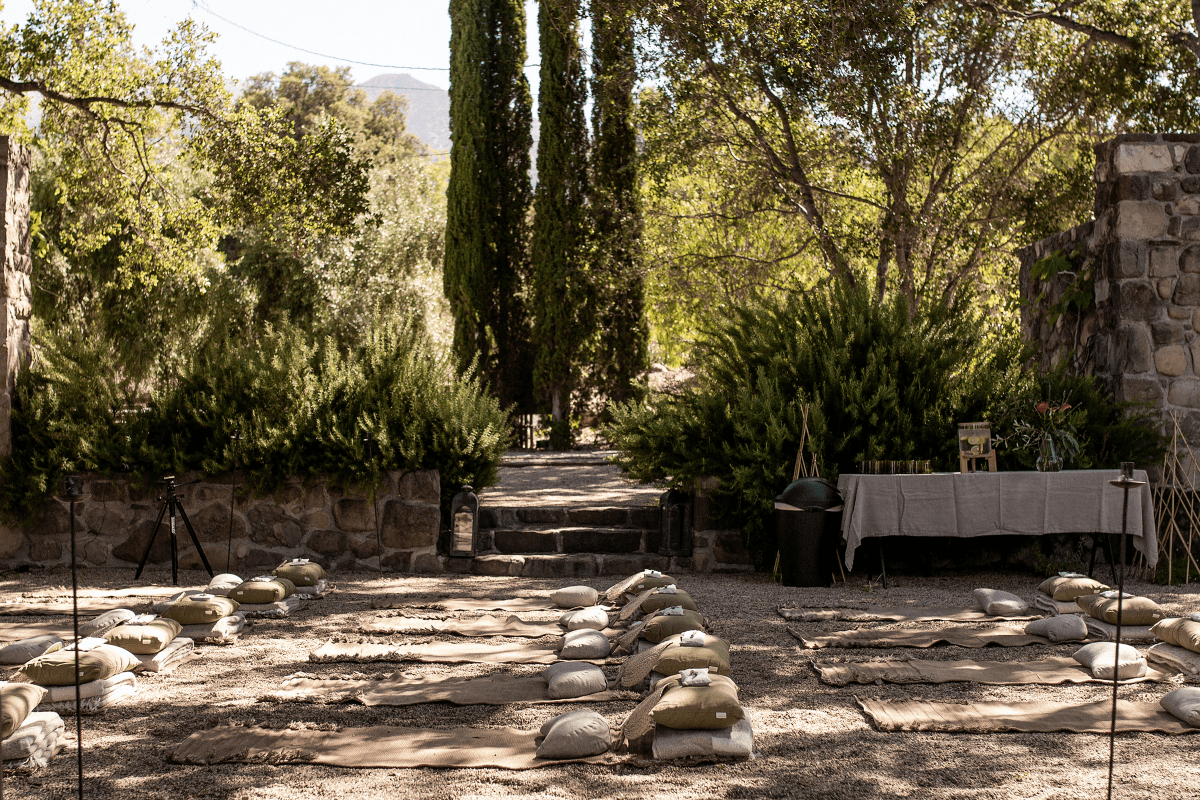
Photography by Maia Hinton
“If we can get those three things organized, we’re going to vibrate at a higher level,” says Roxburgh, who also incorporates star bathing, sound healing and salad bowl foraging into her retreats. Her classic “movement medicine” helps participants shift out of fight-or-flight mode while tapping into greater pleasure and sensuality. “People ready to make the shift within know that they can be the change they want to see in the world,” she adds. “By doing the work, they can inspire others to be the change, too.”
Embodying inspirational change has made Goop an authority on all things woo. Love it or hate it, Gwyneth Paltrow’s wellness brand is broadcasting the perks of stepping out of your comfort zone through its online presence, podcast and events. In 2017, the team kickstarted its In Goop Health summits and saw an outpouring of international attendees craving connection with like-minded individuals. The 10th in-person summit was recently held in Los Angeles, with tickets starting at $1,200. That price tag granted attendees access to activities such as a Q+A session with GP herself, intensive breakout workshops and more. Virtual and pop-up events are more accessible (even free sometimes), while wellness die-hards can splurge on Celebrity Cruises’ opulent Goop at Sea voyage.
“I am always amazed by just how compassionately and quickly practitioners can create a container where people feel safe to be curious, explore, share and change their minds,” says Goop Vice President of Content Kiki Koroshetz. “Within 45 minutes, they shake their bodies, cry, laugh and meet a part of themselves they never have before.” Much of this woo is witnessable on the Netflix series The Goop Lab, where staffers embark on collective, life-changing experiences from plunging into freezing water to taking psychedelics. Whatever the woo, the best souvenirs are the invaluable take-home tools that make daily life richer and more meaningful.
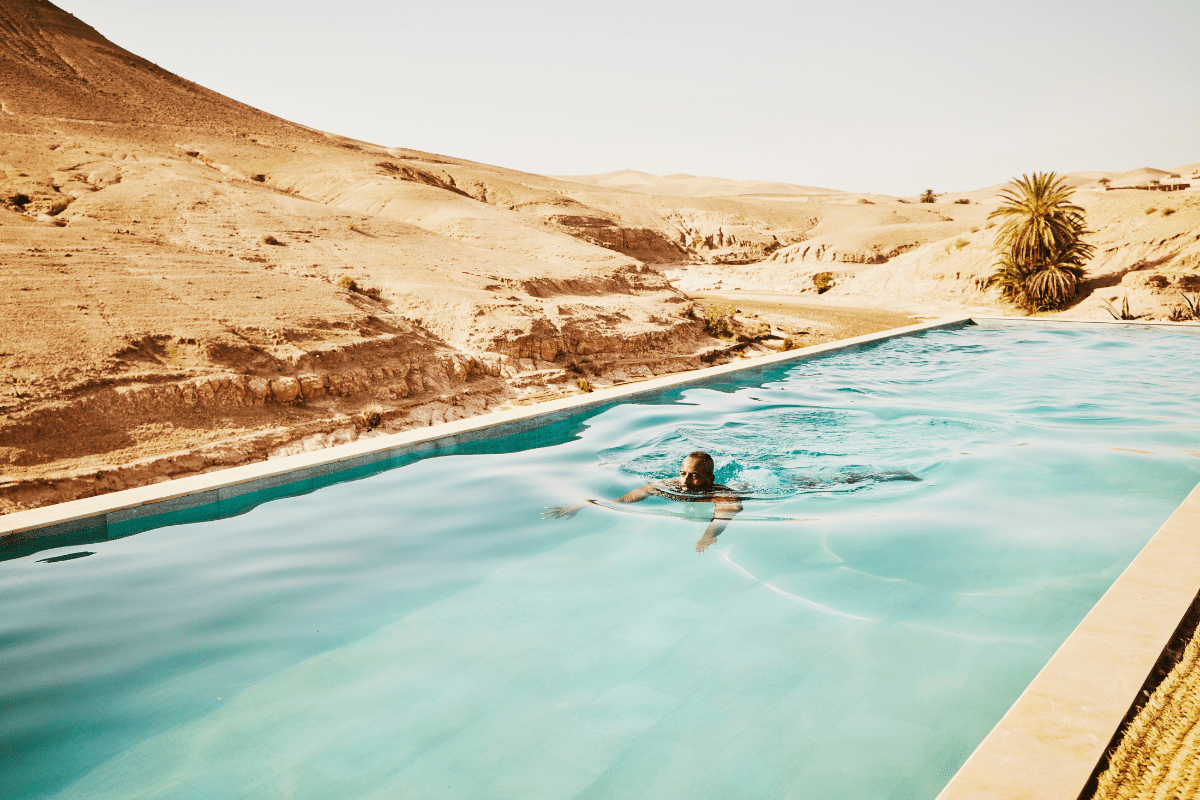
Photography by Thomas Barwick
Healing at Home
The challenge after any retreat is, of course, how to bring it all home. To take one thing that resonates and generate change. Maybe an icy lake plunge becomes a daily cold shower. A wilderness safari translates to an evening walk with a loved one. Aroma yoga becomes a daily dab of essential oil. These little acts aren’t just reminders but rather ways to integrate those big experiences into real life.
Last year, Meredith Markworth-Pollack traded her career as a maxed-out movie and TV costume designer (known for her work on Dynasty, American Crime Story and Hart of Dixie) to open Palma Colectiva with her husband, Daniel Pozas, an intuitive healer from Mexico. Together, they lead retreats targeting specific industries and groups, such as Hollywood execs, looking to infuse balance into their business.
“Many retreats focus on relaxing, which is very much needed, but others thrive from having a more curated approach through curriculum,” Markworth-Pollack says. At her Of Two Minds retreats, burnt-out female founders gain a circle of peers to call upon. “Each individual may feel isolated in specific challenges, but being supported by a community and having mentors is tremendous in their spiritual and professional journeys,” she adds.
During the beach release ceremony, guests let the ocean take what’s no longer serving them — just like Hill’s group giving up one negative thing in the jungle or Varty’s trackers shedding fears on the dirt trail. Leaving something behind opens up space to ignite something new.

Photography by Gemma Ingals
For the skeptics who still find astrology and ocean releasing a little too, well, Goopy, let’s get back to my cacao sipping. After the ceremony, our small group shared experiences over a balmy, candlelit evening on the Nicoya Peninsula, a designated Blue Zone known for fostering longevity. We swapped cacao for wine and began to break down the woo. Fears were released. Visions were discussed. Business plans were born. The former CIA agent cried. I confessed that I was now a believer.
In surrendering to the deafening shamanic drumming while laying still on a blanket, I closed my eyes and flung down a spiral slide. There was a sparkling ocean, a temple, a tiger — all symbols of something important. But what? While I tried to decipher the meaning of these figments of my imagination, the drumming intensified and the visions raced. The tiger chased me alongside a subway, speeding until we reached a garden gate with a flashing light and a four-word message: Take It With You. As I reached in painfully slow motion for the bulb, the facilitator suddenly pulled us back into the present. The drums stopped. My eyes flew open. What on earth? Were we hypnotized? What does it all mean?! It would take months to decode the message, with the help of like-minded friends, on retreats, in it together. Yes, I am officially hooked.
I share this as a temptation and a warning from one former skeptic to others out there. Pulling back and partaking in these spiritual gymnastics may cause a hilltop or yoga mat epiphany that a private beach cabana can’t provoke. You may find yourself in a similar spot as myself, not only believing but wanting to get even closer to the edge. What’s next? Maybe there will be unforeseen visions or unexpected epiphanies. Maybe there’ll be a message to decode. Maybe it won’t make sense right away. But hopefully it will make your heart crack open and your eyes fly wide with wonder. And you can answer one thing: So what makes you feel alive?


